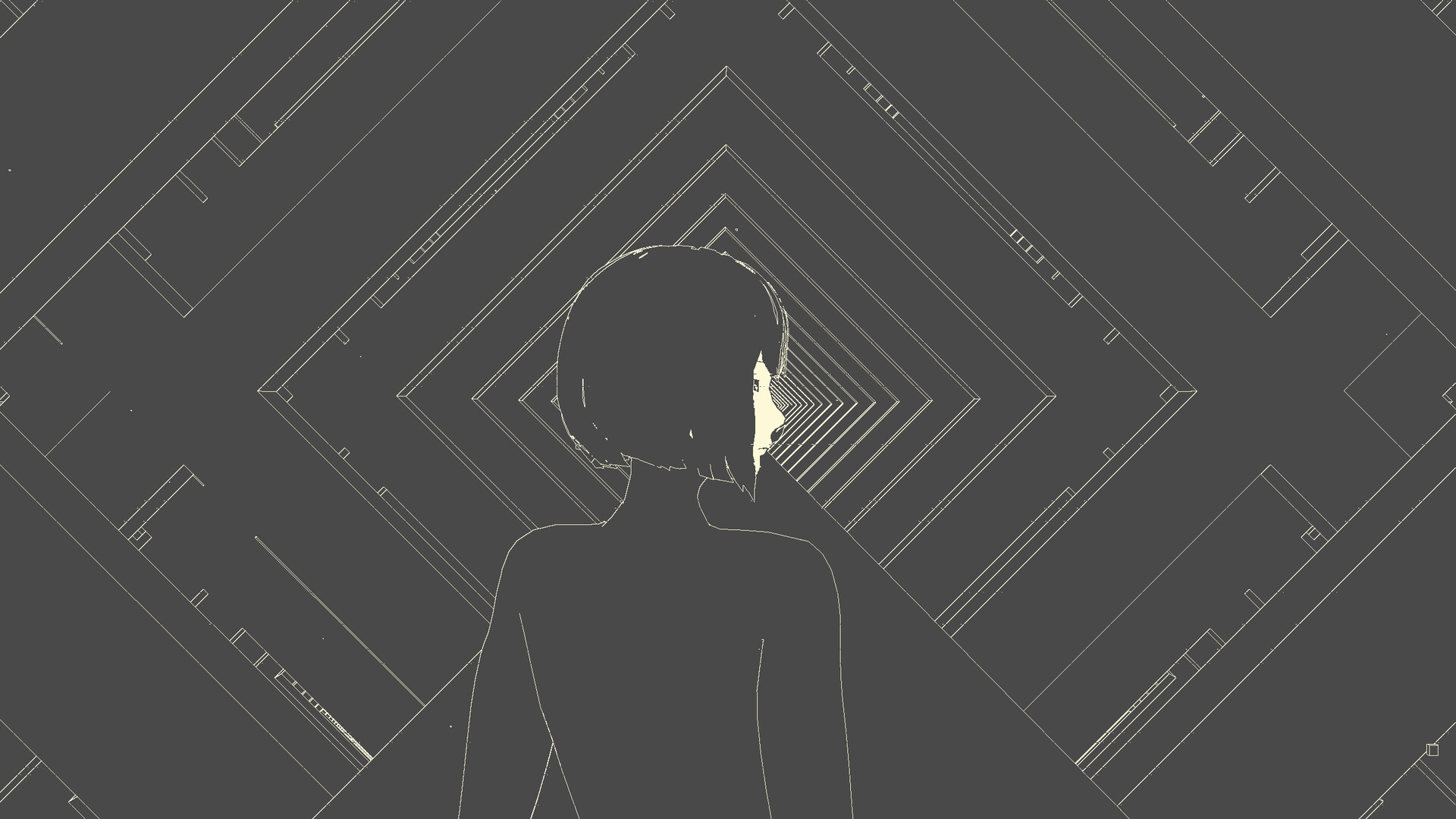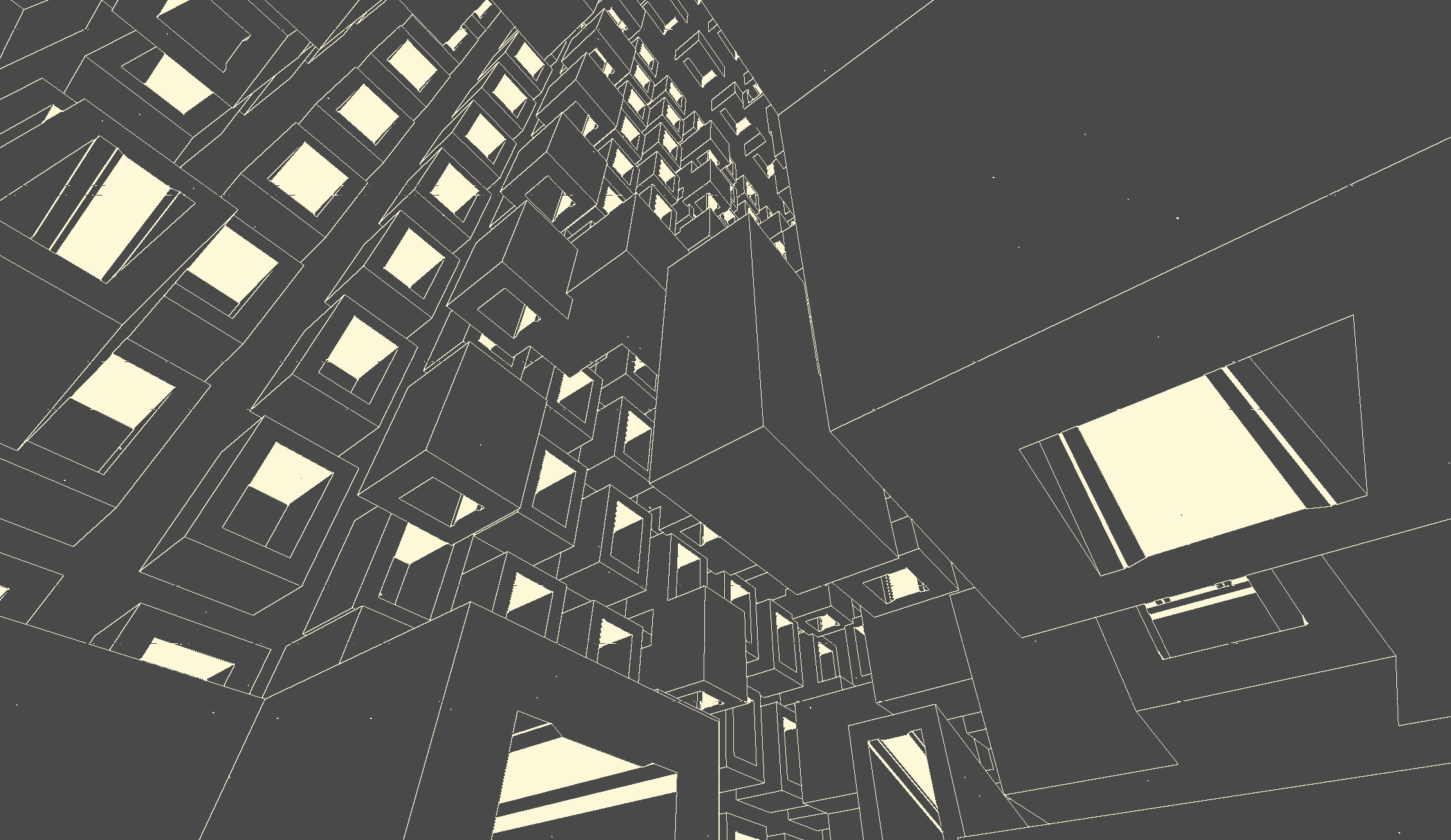← Back to Blame-likes Compendium
NIDANA is a BLAME!-like that swaps Tsutomu Nihei’s grime and rust for crisp black-and-white line art. On Steam it's described as an endless dream: you drift through shifting, impossible architecture while an unnamed figure—presumably the dreamer—keeps re-appearing at the periphery of your vision. The style of the game could be more described as line art than the megastructure a blame-like normally has. But it looks beautiful and is meticulously animated.

The levels are broken into smaller sub-levels that are connected by a central room where you can dive into the next level. A playthrough takes around 2 hours, which paired with the premise of solving simple puzzles was too long for me.
Every line is razor-clean, every animation painstakingly smooth, and the constantly reconfiguring rooms reinforce the dream logic. The downside is sensory overload: even if you’re not photosensitive, the strobing geometry can verge on nauseating. I'm not someone who's triggered by epilepsy, but sometimes I felt nausiated as well.
Sparse audio cues double as signposts—an analog crackle when you’re on the right track, a TV-static whoosh when you’re not—subtly teaching each puzzle’s rules without on-screen text.
It has some of the vibes, but the dream setup clashes with the gritty mega structure a blame-like is known for. The game mechanic of walking and basic puzzle solving also exceed its welcome in my oppinion.

Regarding the technical implementation, while the art looks stunning and is enriched by interesting custom shaders, obvious oversights like anti-aliasing or locking the mouse to the window are hard to understand.
NIDANA is the debut of lvl374, an anonymous artist known for mathematically informed pixel art. Judging the game solely by BLAME! conventions is reductive—but that lens still highlights where its ambition and execution diverge.
In summary: NIDANA is a visually arresting, concept-forward experiment whose dreamlike spaces are worth visiting—just be prepared for a journey that lingers a little too long in its own headspace.